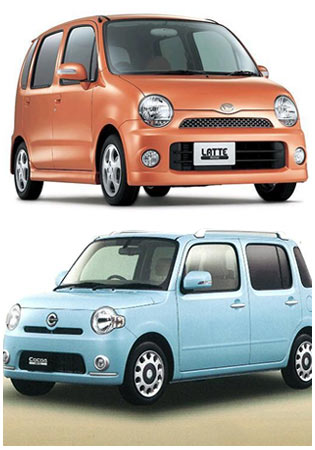Japan’s automobile market is quite different from what you may be used to in your own home country. For starters, every car is sold through factory-owned dealerships rather than through third-party dealers, a model famously copied by GM’s Saturn division, and when you buy a new car you generally wait 2-3 months for the factory to build it rather than driving it off the lot that day. There’s a cycle of “lucky” and “unlucky” Buddhist days in Japan, and it’s important to make sure you take delivery of a new vehicle on one of the lucky ones lest some tragedy befall you and your family. In addition to car models you may be familiar with — the Honda Odyssey, the Toyota Prius, the Mazda CX-5 — there are many models sold only in Japan, with names like Nissan Elgrand Homy, Honda That’s, Mazda Bongo Friendee and Daihatsu Naked. One of my favorite categories of automobile is the subcategory of extremely kawaii cars marketed to females, with cute names like Nissan Moko, Suzuki Chocolat and the Daihatsu Mira Cocoa and Move Latte. They sound delicious.The Japanese automobile industry has been greatly affected by two social trends over the past decade or so. The first is 自動車離れ jidosha-banare or the trend of young people being less and less interested in owning a nice car, which began around the turn of the millennium. Whereas previous decades saw young people saving their money for that first set of wheels, the current generation of young Japanese places more emphasis in other areas of their life, such as keitai (cell phones) or social media, and don’t see car ownership as the status symbol it once was. This has caused Japan’s domestic car market to shrink, and forced car companies to get creative at making cool-looking “kei” (light) cars that can be purchased for the equivelent of $12,000 or so. A related trend is 草食化 soushoku-ka, the so-called “herbivorification” of males in Japanese society. In days of yore, a guy would be happy to work extra hours so he could save up for a really nice car that would impress girls, which is called a nampa-sha or “girl hunting car.” Over the past decade or so, more men have mellowed and are less interested in dating and making sexual conquests, happy to sit at home watching YouTube or working on hobbies than in more “carnivorous” eras.

There’s a complex ecosystem of cute cars for girls in Japan.















